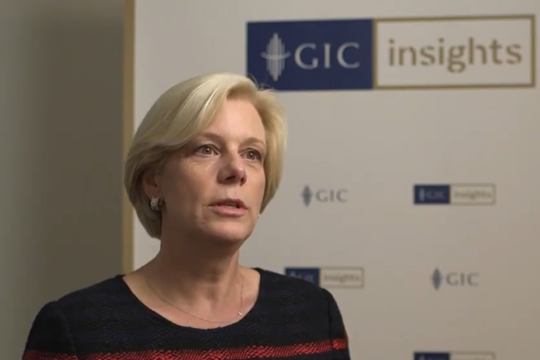


Research has consistently found that the vast majority of corporate executives think that short-term pressure is growing, that it is changing their business decisions, and that those changes are destroying value. Many companies have combatted this phenomenon by moving away from quarterly earnings per share (EPS) guidance. Prior work from FCLTGlobal has shown that quarterly guidance does not improve valuation, reduce volatility, or keep management accountable, yet some companies continue to issue it during earnings season.
While many companies have shifted away from issuing quarterly guidance to their investors over the past decade, in large part they have not provided them with viable alternatives, such as issuing longer-term guidance that links the business’ strategy to key performance metrics.
Year-end 2022 numbers show that work remains for companies to both lower the prevalence of quarterly guidance (particularly in the United States) and increase the level of detail in investor presentations of long-term strategic plans.
Last year, approximately one in five S&P 500 companies issued quarterly EPS guidance, essentially the same as in 2021. While it is encouraging to see that the number of companies issuing quarterly guidance has steadily declined over the past decade (from 36% in 2010 to 21%), save from a spike in 2020, the prevalence of this practice has remained relatively consistent over the past five years.
By contrast, quarterly guidance continues to remain a non-issue in Europe. The percentage of Euro Stoxx 300 companies issuing quarterly guidance has remained at around 1% over the past decade.
In 2022, more companies on the MSCI All Country World Index issued annual (35.0%, or 1011 companies) and long-term guidance (7.7% or 223 companies), or guidance reflecting 2+ years, of key financial metrics (EPS, Sales Growth, Capital Expenditures, EBITDA) than in 2021 (33.7% and 7.3% respectively), continuing an upward trajectory since the nadir during the pandemic in 2020.
Although it is still relatively rare for companies to provide their shareholders with long-term guidance, those that do so can build buy-in among long-term investors, alleviating short-term pressure. By focusing on competitive advantages, long-term objectives, capital allocation priorities, and integrated climate strategies, companies can turn investor guidance into the start of productive, two-way dialogues instead of press releases for short-term traders.
Between 2019 and 2022, more companies in the Americas issued annual guidance than their peers in EMEA or APAC, with U.S.-based companies accounting for approximately 40% of total annual guidance issued during that period. Companies based in the U.S. also accounted for half of all long-term guidance issued worldwide.
Companies can offer clearer communications to their investors by developing robust strategic roadmaps that integrate key performance benchmarks.
To determine the level of detail being included in current long-term guidance, we assessed the presentations of the 100 of those 250 companies that provided the longest-term guidance (reflecting 3 years or more) based on criteria that are relevant and necessary for investors to make informed long-term decisions about a company’s strategy, tracking how often companies disclosed the following six metrics:
Does the strategic plan…
That assessment reveals that only 76 of the 100 companies had components of their strategic roadmaps integrated with their long-term financial guidance. Of those companies, 48 further incorporated key criteria like climate goals, investments in R&D, and alignment with mission statement into their investor presentations.
Of those 76 companies, the vast majority incorporated discussion of external influences and capital allocation strategies (79%), but far less included climate change (62%) and investments in R&D (60%). More alarmingly, only 17% of these companies incorporated investments in the workforce, suggesting that either many companies are not investing enough in their employees or they are not talking about these investments with their shareholders.
As we look ahead to earnings seasons in 2023 and beyond, companies that resist the temptation to issue quarterly guidance, and instead focus on issuing longer-term guidance and strategic roadmaps, will be setting themselves up for sustained success. These plans should cover not only financial targets, but also detailed approaches to goals related to climate change, workforce investments, and other concerns essential to the company and its many stakeholders.
The progress shown in 2022 was promising, but much work remains to focus the investor community on companies’ long-term goals over their short-term targets.

Investor-Corporate Engagement, Earnings Guidance | Report
23 October 2017 - Since 2005, research has consistently found that the vast majority of corporate executives think that short-term pressure is growing, that it is changing their business decisions, and that those changes are destroying value. One effective way that corporations are combating this phenomenon is by moving away from quarterly earnings per share (EPS) guidance and instead providing investors with a long-term road map focused on the fundamental economic drivers of the business tied to management’s outlook on critical key performance indicators (KPIs). As we highlighted in our...

Earnings Guidance | Video
25 September 2017 - CEO Sarah Williamson shares her thoughts on quarterly guidance and companies' and investors' on going focus on quarterly results.

Earnings Guidance | Article
25 February 2022 - Quarterly EPS guidance is inherently short-term, but more companies returned to the practice last year.